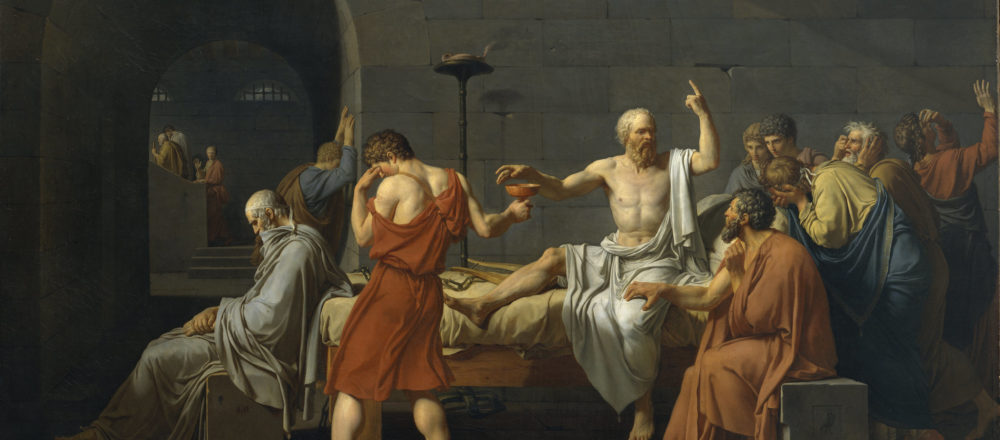The topic of euthanasia, when brought up, does something to a lecture theatre. The room hushes; a revered silence passes through the room like mist over a lake. No one speaks – not because they feel like they can’t, but because they don’t want to. This is important, and everyone knows it. This is a matter of life and death.
In November 2017, Victoria became the first state in Australia to legalise voluntary assisted dying (VAD), a move which provided terminally ill patients with the right to request a lethal drug to end their lives. This legislation, now in operation in Victoria, has given other Australian states such as Western Australia the impetus to consider legislating on VAD themselves. As a law student with an interest in health law, I have attended a number of lectures considering the ethics of assisted dying in both Victoria and Western Australia. Though separated by state lines and thousands of kilometres, each one began with the root meaning of euthanasia in the Greek: a ‘good death’. To be able to access VAD has become commensurate with accessing a good death, and it is this notion of a ‘good death’ that provides us with an enduring moral, philosophical and legal justification for euthanasia, one that has existed (literally) since the Greeks.
Mary Beard, in an essay for The Guardian, writes about the ‘exit strategies’ of the Romans and the Greeks. Often, this has meant an utterance of some famous last words, which allows the speaker to exit in style. Socrates reminded his grieving friends to make an offering to the god Asclepius (“Crito, we owe a cock to Ascepius. Pay it and do not forget.”), while Emperor Vespasian wryly joked, “Damn, I think I’m turning into a god.” Beard reflects upon the stylistic elements of these deaths, suggesting that they reveal certain difficulties with the Greek notion of a ‘good death’. Firstly, these stories are very likely untrue, but rather have come about as a “combination of wishful thinking, convenient propaganda, rumour and outright invention.” Furthermore, such deaths give us a version of death that we cannot possibly live up to. Beard writes, “death never actually comes pretty; no matter how we choose to represent it to ourselves, it can’t ever be “good”.”
For better or worse, the ‘Socratic death’ continues to loom large in the public imagination, as well as in public policy. This is illustrated in the Oregon ‘Death with Dignity’ laws, which are widely acclaimed and often serve as model laws for other jurisdictions. One policy justification for the Oregon laws state that “Death with Dignity laws offer dying individuals an opportunity to ponder an important final life question: “What is the meaning of my life?” This justification evokes a distinct philosophical tone, one that might be traced back to Socrates and his aptitude for ponderances. A good death is therefore, a thought-out death, one authored by the writer’s own hand – a final flourish, by which one might bring a good life to a good end. While this narrative of a good death is persuasive, a number of corollaries persist. Why should death be a thought-out affair? What is, in fact, wrong with a less thoughtful death – and what does this wrongness imply about those who live ‘thoughtless’, or ‘unsophisticated’ lives? To address these corollaries is to admit that certain social inequities trouble the ideal of a ‘good death’ – and always have.
Returning for a moment to the death of Socrates, we see the philosopher surrounded by his friends and followers, who are steadily weeping. Socrates tells them, “I sent the women away for this very purpose, to stop their creating such a scene. I have heard that one should die in silence. So please be quiet and keep control of yourselves.” When we view a ‘good death’ expansively, not so neatly captured in some famous last words, we see that its rationale is borne out of a social context that was sexist and exclusionary. The valuing of control and silence in the context of ones’ death was not merely a moral or aesthetic judgment, but also a prejudicial choice. Greek men valued a controlled death precisely because it operated in contrast to the ‘emotional’ behaviour of women, which was viewed with considerable shame. Perhaps for the Greeks, a good death was not an end in itself, but rather a means to elude the threat of a shameful death. This threat is one that continues to lurk behind present justifications of a ‘good death’.
The threat of a shameful death is a justification for euthanasia that at times, has been intimately bound up with notions of prejudice and social exclusion. A Canadian study conducted by Lavery et al in 2001 considered the desire for euthanasia and VAD in people living with HIV or AIDS. In the early 2000s, gay men were still feeling the effects of the AIDs epidemic, which had ravaged their communities for two decades prior – it may then be no surprise that an estimated third of people living with HIV or AIDS had considered euthanasia or VAD. The study found that the desire for euthanasia resulted from fear of two things: the physical disintegration of ones’ body and an accompanying loss of self, as well as the loss of community, which occurred due to exclusion and alienation by others as a result of the illness, and the overwhelming stigmatisation of AIDS and HIV at the time.
A person interviewed as part of the study recounted an incident where he was sitting next to a pregnant woman, who when she realised he was a couple inches away, began to “scream and yell. And…screamed at the nurse that…’I’ll come back when, when that thing is out of here.” While disintegration of the self was found to be a big contributor to ones’ desiring of euthanasia, the lack of community – contributed to by experiences of abject discrimination, homophobia and drug addiction, among other factors – was the ‘make or break’ factor. Lack of community not only predisposed individuals to consider euthanasia, but also could cause an individual to change their minds – 63% of those interviewed said that their decision to have assisted suicide could change with meaningful changes in an individual’s social circumstances, independent of the diseases’ progression.
Lavery et al’s study reveals how discussions around euthanasia do not necessarily begin and end with the interminable prospect of death. Rather, in the context of terminal illness, a fear of an unsophisticated death is fed by prospects of social exclusion. It is not merely the sick who are the population exercising the choice to end their own lives, but the sick and the lonely, the lost, the fearful and ashamed. This conception of euthanasia reveals that while in many cases, death is terminal, so too are the terms of social exclusion. In choosing the terms on which we die, might we also be re-producing the social contract, the terms on which others live their lives?
Senator Pat Dodson, a prominent Indigenous Australian has opposed the legalisation of VAD in Western Australia for this very reason. In an opinion piece for The Australian, Dodson expresses his fear that VAD may create yet another “avenue of death” for First Australians. While the right to a good death may quell suffering and spare loved ones’ trauma in non-Indigenous settings, for Indigenous peoples the very notion of a right to a good death is absurd. How can we even begin to talk about affording an equal access to a good death for Indigenous Australians, when access to the right to live is still unevenly provided by the state and the medical profession? From the spates of child suicides in the Kimberley to Indigenous deaths in custody, Indigenous Australians are dying earlier and suffering more at every stage of life than non-Indigenous Australians. Furthermore, successive governments have failed to ‘close the gap’ in access to the right to health between Indigenous and non-Indigenous persons, with Indigenous peoples continuing to have poorer overall health outcomes and lower life expectancies than the general population. The rights to access proper healthcare and dignified treatment by state institutions are basic human rights that scaffold our existence. They are rights that are so basic, we often take for granted that they exist. It is upon these rights and principles that the right to a good death is founded upon, rights that for many are not yet entitlements, but unaffordable luxuries in the marketplace of rights.
The fact that the right to a good death is being championed at a time where efforts to support Indigenous Australians’ basic rights to self-determination are faltering is awkward at best. But more than that, it is symptomatic of a choice made to privilege the immediacy and fulfilment of ones’ rights over the longstanding, undetermined rights of others. For Western Australia, the above considerations are a particular difficulty that must be acknowledged in the debating of the VAD legislation. As a state with a large population of Indigenous Australians and a checkered history in dealing with Indigenous deaths, a responsibility is owed to Indigenous populations to not only consult and take into account their views, but further, to pass laws that thoroughly consider the impact that the law will have on existing communities. That responsibility requires us to take a larger view of VAD – one that extends beyond the moment of ones’ death; beyond the importance of better palliative care to a fundamental concern of human rights: what is the content of our lives? And how can we make sure that people don’t fall through the cracks of their own existence?



